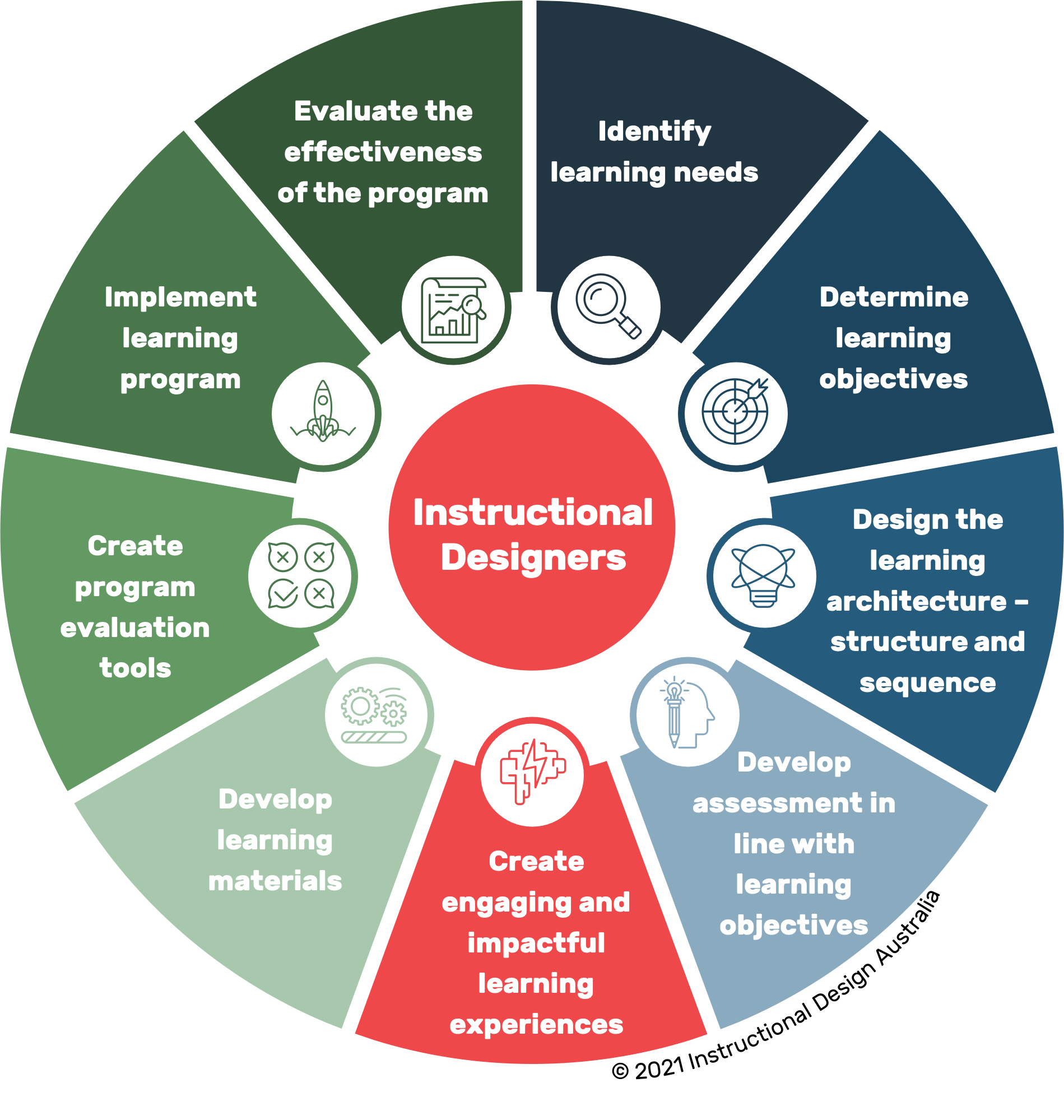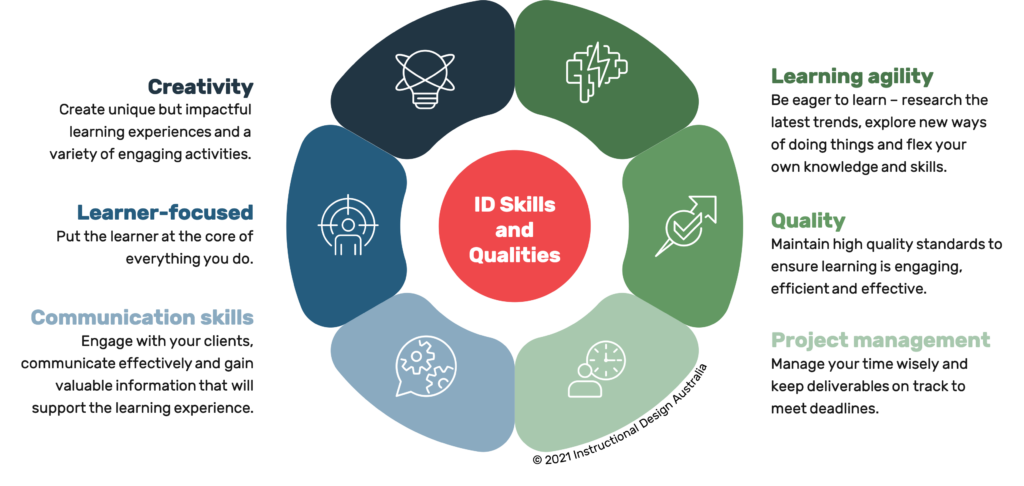Instructional Designer
What is an Instructional Designer?
An Instructional Designer is a learning specialist and their role is to design and develop instructional materials and learning experiences. Instructional designers are experts in learning and teaching principles and can determine best practices for addressing learning needs and delivering positive learning outcomes. Instructional materials, also known as teaching or learning materials, are designed to aide learning and development. At DLD, some typical materials and products that an Instructional Designer might develop include instructions and manuals, face to face training programs, elearning courses and blended learning to name a few.
Visit our What is instructional design? page to learn more about Instruction Design and what Instructional Designers do.
What does an Instructional Designer do?
At DLD, Instructional Designers use their knowledge of learning practices and principles to create learning experiences that are effective and meaningful for the learner. Some of the key responsibilities of an Instructional Designer include working with clients to identify the learning needs and learning objectives, designing the learning structure and sequence, developing learning materials and experiences, and incorporating meaningful assessments.
At DLD, our team of Instructional Designers use the ADDIE model to inform their Instructional design process. ADDIE stands for Analyse, Design, Develop, Implement and Evaluate. Our Instructional designers analyse the learning needs and objectives, design the structure and sequence of the learning, develop the instructional materials, implement the learning program, and evaluate the effectiveness of these programs.
Visit our What Do Instructional Designers Do? page to learn more.

Do I need a degree to be an Instructional Designer?
If you’re interested in becoming an Instructional Designer, you don’t necessarily need a qualification or license. You do, however, require sound knowledge and understanding in learning theories, adult learning principles and assessment strategies.
DLD offers Instructional Design courses to assist you in developing your knowledge and understanding of Instructional Design practices and principles. There are three course options if you wish to learn the basics, have a more in depth experience, or to educate your organisation.
The courses are self-paced (or face to face for organisations), they include practical tools and methods for instructional design that can be tailored to your needs, grant you with lifetime access to handy templates, and there are also options for feedback and coaching along the way.
What skills do you need to be an Instructional Designer?
The skills needed to be an Instructional Designer include an understanding of adult teaching and learning principles, how to apply learning design models, learning technology experience, computer skills, creativity and innovation, the ability to communicate well verbally and written, effective assessments strategies, and most importantly a passion for education.
It’s also important that you have project management skills such as time management, good stakeholder communication, manage multiple projects simultaneously, and efficient problem-solving and decision-making.
Tools and technologies used by Instructional Designers
Instructional Designers use a range of tools to create effective learning experiences:
- Learning Management Systems (LMS): Platforms like TalentLMS, Learnworlds and Moodle for delivering and managing online courses.
- Authoring Tools: Software such as Articulate Storyline, Articulare Rise 360, and Chameleon Creator for creating interactive e-learning content.
- Video Editing Software: Tools like Adobe Premiere Pro, Camtasia, and iMovie for producing educational videos.
- Graphic Design Tools: Adobe Creative Suite (Photoshop, Illustrator), Figma or Canva for creating visually appealing learning materials.
- Project Management Software: Trello, Asana, or Microsoft Project for organising and tracking instructional design projects.
- Collaboration Platforms: Miro, Microsoft Teams, Slack, or Google Workspace for team communication and file sharing.
Is Instructional Design a good career?
At DLD, we have a great team of Instructional Designers who bring their wealth of knowledge, experience and enthusiasm to work each day. We believe Instructional Design is a fulfilling and rewarding career for passionate individuals who want to make a positive impact in adult education. At DLD, instructional design is our passion and we love what we do. If this sounds like the career for you, maybe it’s time to learn more about it by visiting our page on Instructional Design courses.
Are Instructional Designers in demand?
Instructional Designers who can create effective learning programs are in demand more than ever before. With tertiary education and many organisations opting for face to face, online, blended leaning and eLearning solutions, the demand for Instructional Designers is growing. A great first step to becoming an Instructional Designers is to learn the in-demand skills and practices via DLD’s Instructional Design courses.

